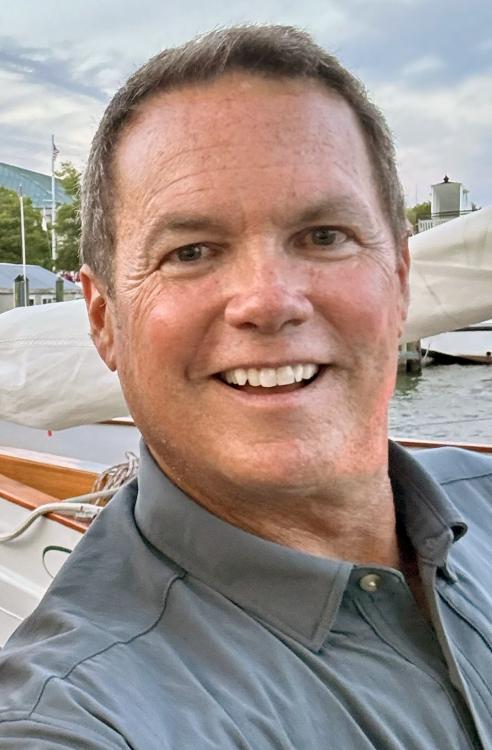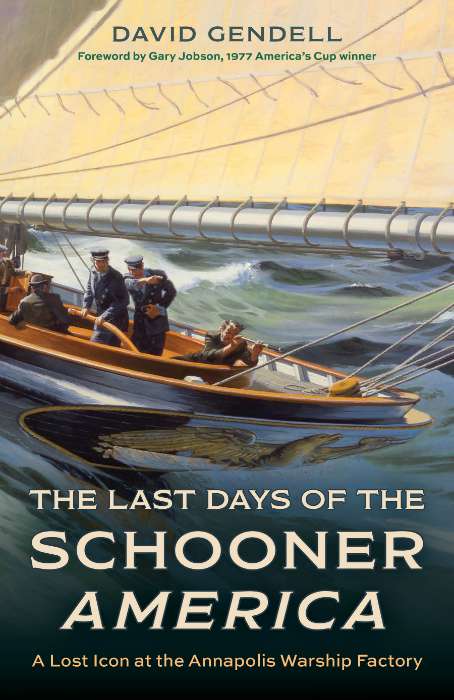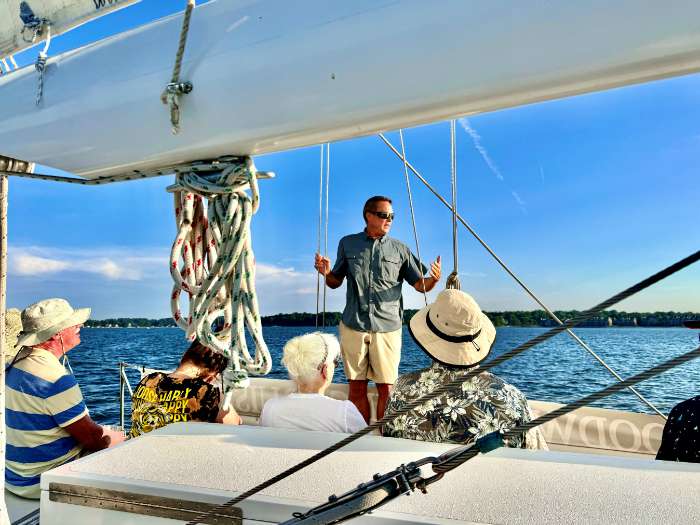A Q&A With Dave Gendell, Author of “The Last Days of the Schooner America”
Since Annapolis author and SpinSheet co-founder Dave Gendell releases his second book this month (learn about the first book here), we reached out to him to learn about his writing process:
When did your obsession with the Schooner America begin?
“Obsession” is a strong word, but in this case I think it is accurate. I feel like I have always been aware of the general shape of the America story: the events leading up to the 1851 race in England, that race, and the Cup she won that day. Around 2000 I learned of her connection to Annapolis. I found this part of the story deeply fascinating and quickly realized that it had not been fully researched or told by anyone. I dove in at that point.

You’ve known a lot of sailor-historians in Annapolis—can you name the most important influences on you?
I love and live by the William Faulkner quote: “I discovered that my own little postage stamp of native soil was worth writing about and that I would never live long enough to exhaust it.” Although in this case we might substitute “patch of brackish water” for “native soil.” To that end, I get great energy from reading, learning from, and, if possible, spending time with those who feel similarly. Thankfully, it seems that sailors, as a community, have a special connection to history, be it the places we sail, the classic boats we all love, or the stories and legends passed down over the generations.
There are, of course, a few specific people who influence and inspire me along the way. Gary Jobson has an insatiable amount of energy and curiosity, and I would add “sailing historian” to the long list of descriptors associated with him. The author Nathaniel Philbrick has modeled an incredible career of scholarly research crafted into commercially viable books. Over the years I was lucky enough to develop close friendships with history-minded sailors such as the late David Dunigan, Fred Hecklinger, and Laurence Hartge, all of whom were deeply influential in the America project.
In terms of getting deep into Annapolis and the specific history here I have been lucky enough to call Carol Patterson and Jane McWilliams friends and influences (together they wrote the history of Annapolis’s Bay Ridge neighborhood, and McWilliams is the author of the seminal “Annapolis, City on the Severn”). In recent years that duo has been great with the “pressure tests” for ideas, theories, and concepts. They are also excellent test readers and enthusiastic supporters.
Do you have a piece of the vessel?
The late Fred Hecklinger gave me a nice hunk of what he called “The True Cross” circa 2000. It’s a heavy piece of pockmarked wood, almost black in color. I still keep it on my desk. I like to believe there is some sort of magic in that bit of wood. Over the years Fred passed along a few other sections which I still have. The wood Fred possessed came to him from Charlie Dell who, along with a few others, went to the Annapolis City Dump in 1946, after America was broken up, and dug out sections. Back in 1967 the Annapolis writer Bunny Rigg reported, “To this day bits of her teak planking, still studded with coppering nails, and often carrying shattered bits of the locust tree nails with which the America was fastened still show up under Annapolitan porches or are dragged from barns or dependencies where they had been sentimentally stowed.” I think this still holds true 57 years later.

What makes this book personal for you?
This book was the result of a research and writing project that stretched more than 20 years. I wasn’t working on “The Schooner Book” the entire time, of course. Inside that timeframe I did the entire Thomas Point Shoal Lighthouse book project, raised a family, had a career, etc. Along the way, there was always a file related to America or the Annapolis Yacht Yard open on my desktop.
During that time, I met and interviewed people who were on the ground at Annapolis during World War II. I met and interviewed the descendants of the story’s protagonists, and I grew deeply fascinated with its dual narrative: as America physically comes apart, the Annapolis Yacht Yard is in a meteoric rise all around her, led by charismatic, patriotic men and a hardworking crew of hundreds of wooden boat designers and builders, all determined to convert the facility to a warship factory for the United States Navy and its wartime allies.
In many ways, the roots of the modern maritime industry in Annapolis and the entire region were set at the Annapolis Yacht Yard. As I wrote in the book’s introduction: “I have never been able to shake free of America and the Annapolis Yacht Yard. These stories are intertwined with the old streets of Annapolis. Parts of them remain visible along the working Eastport waterfront. They are embedded into the hunks of wood the sailors still pass around. They are part of me.”

What was the hardest part about writing this book—or the hardest part of the story to tell?
After I learned that America’s final haulout and failed rehabilitation and the warship building of the Annapolis Yacht Yard existed on the same timeline and at the same physical location with the same people involved in both, the challenge became giving both stories the oxygen they deserved and required. The most interesting challenge was uncovering and exploring the motivations and attitudes of those on the scene and making decisions in the 1940s. They respected and even loved America, of course, but there was a world war underway, a planet to save, and the work they were doing on the ground at Annapolis was directly impacting that war effort. Finding primary sources that illustrated the motivations behind their decisions or learning enough about them to make some well-informed assumptions about their motivations was a fun challenge.
After that, the biggest challenge was the process of leaving behind some of the tangentially associated stories. Sections with deep, original research on other interesting things happening at Annapolis at the same time—Robert Goddard’s rocket work across the river and the 1942 Army-Navy football game, played just across the creek from America and the Yacht Yard piers, for example—were cut and moved into new folders, separate from the America book. Always painful for a writer to do that, but they will see daylight on their own someday, the football one very soon!
How can SpinSheet readers order your book?
I am honored to be the one to tell this story and thrilled that there are sailors interested in learning more. The book (hardback and in electronic forms) is available at all the usual online outlets or directly from the publisher (rowman.com). It is also at bookstores, and I love the idea that readers can find it in physical bookstores. There will be some book-related events around the Bay this summer and fall; stay tuned to SpinSheet for more information. I will post updates at davidgendellbooks.com.
What’s next for you?
I am under contract to deliver another book to the same publisher. “Battles at Annapolis: Army, Navy, and Two Remarkable Football Games” is scheduled to be published in August 2025. It covers the 1893 and 1942 Army-Navy football games, the last two played at Annapolis. These two games were played under unique circumstances by young men who, not long after the games, were involved in extraordinary combat service on behalf of the United States.
Check out Gendell's epic story about Hurricane Isabel.




